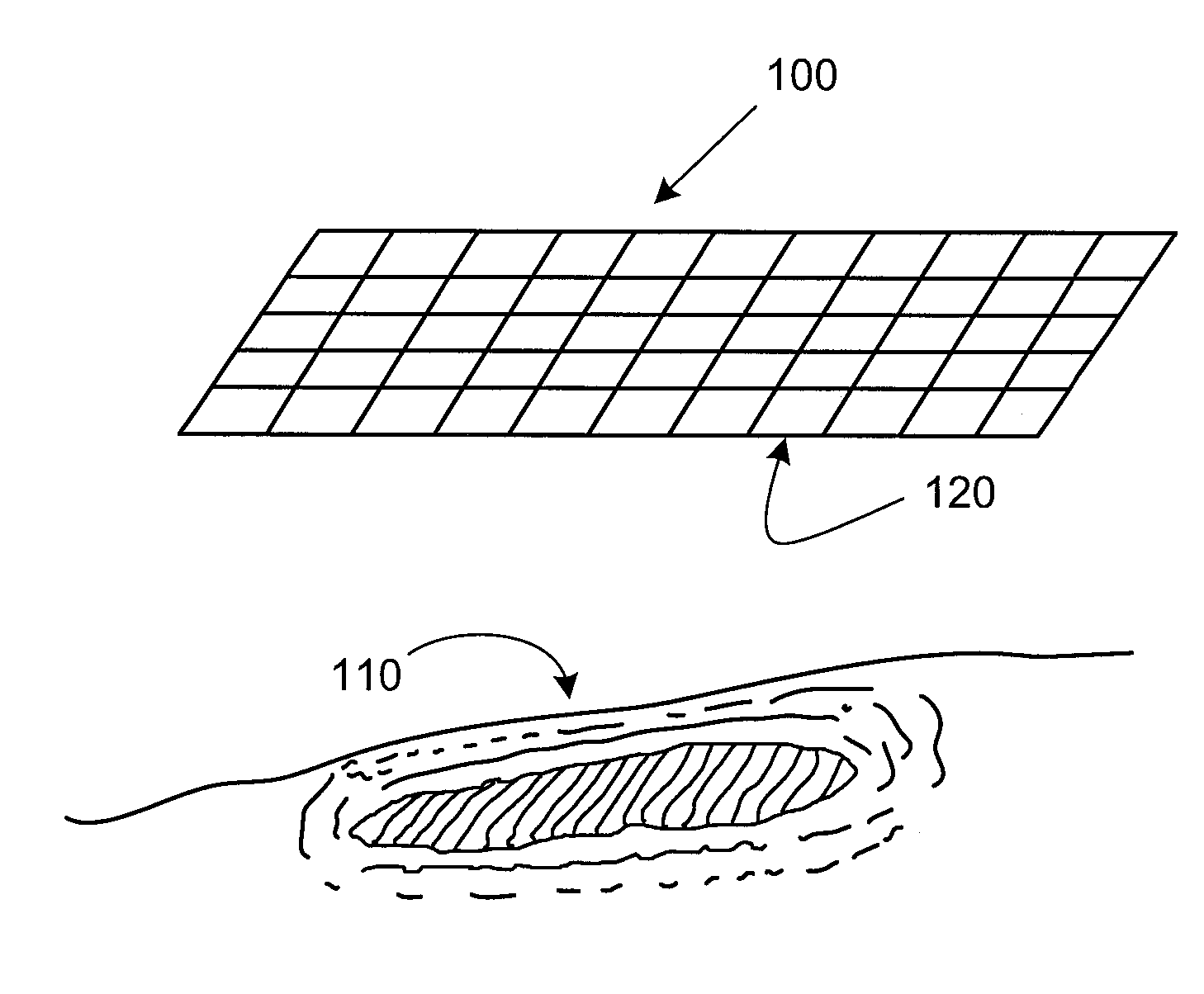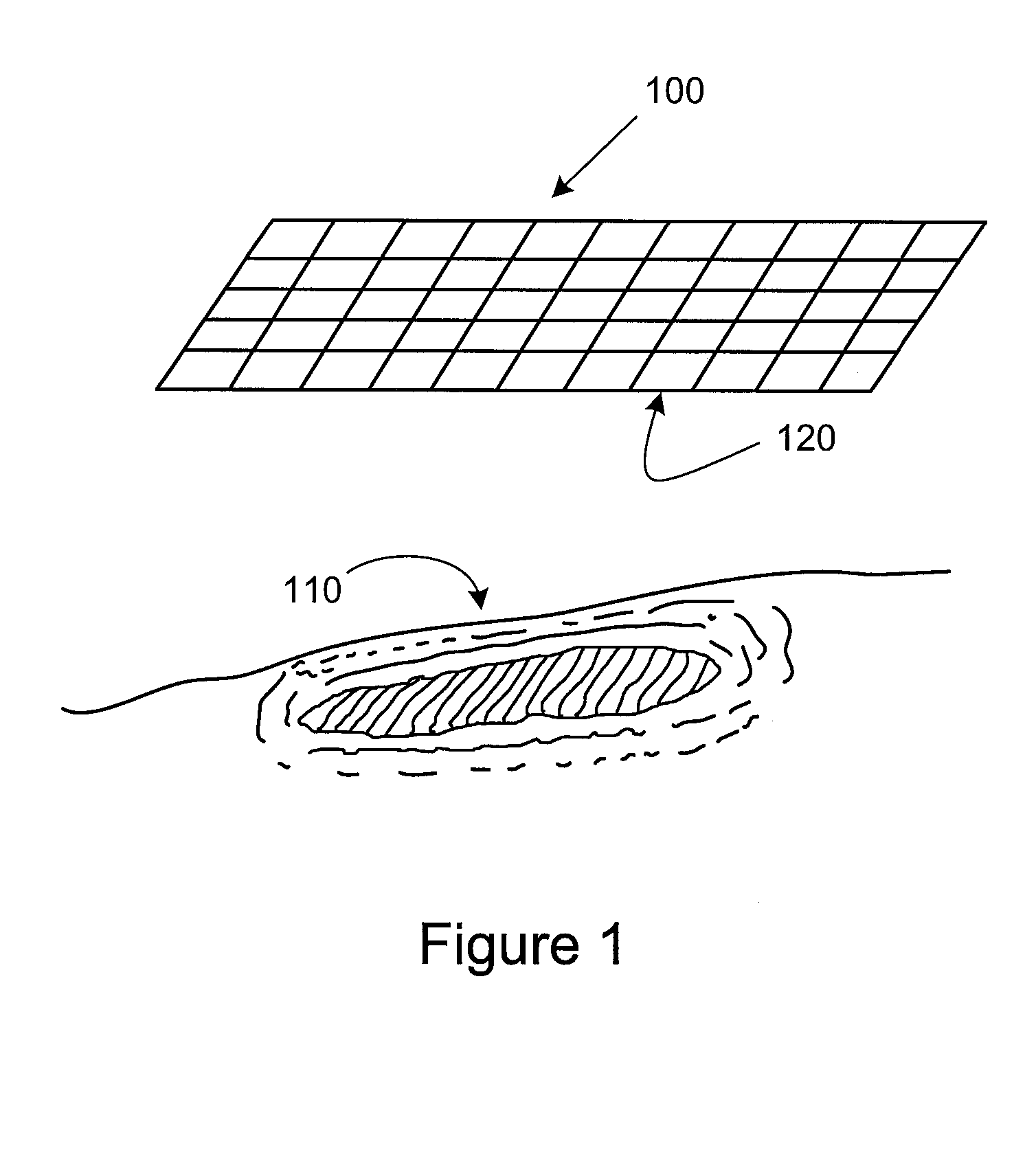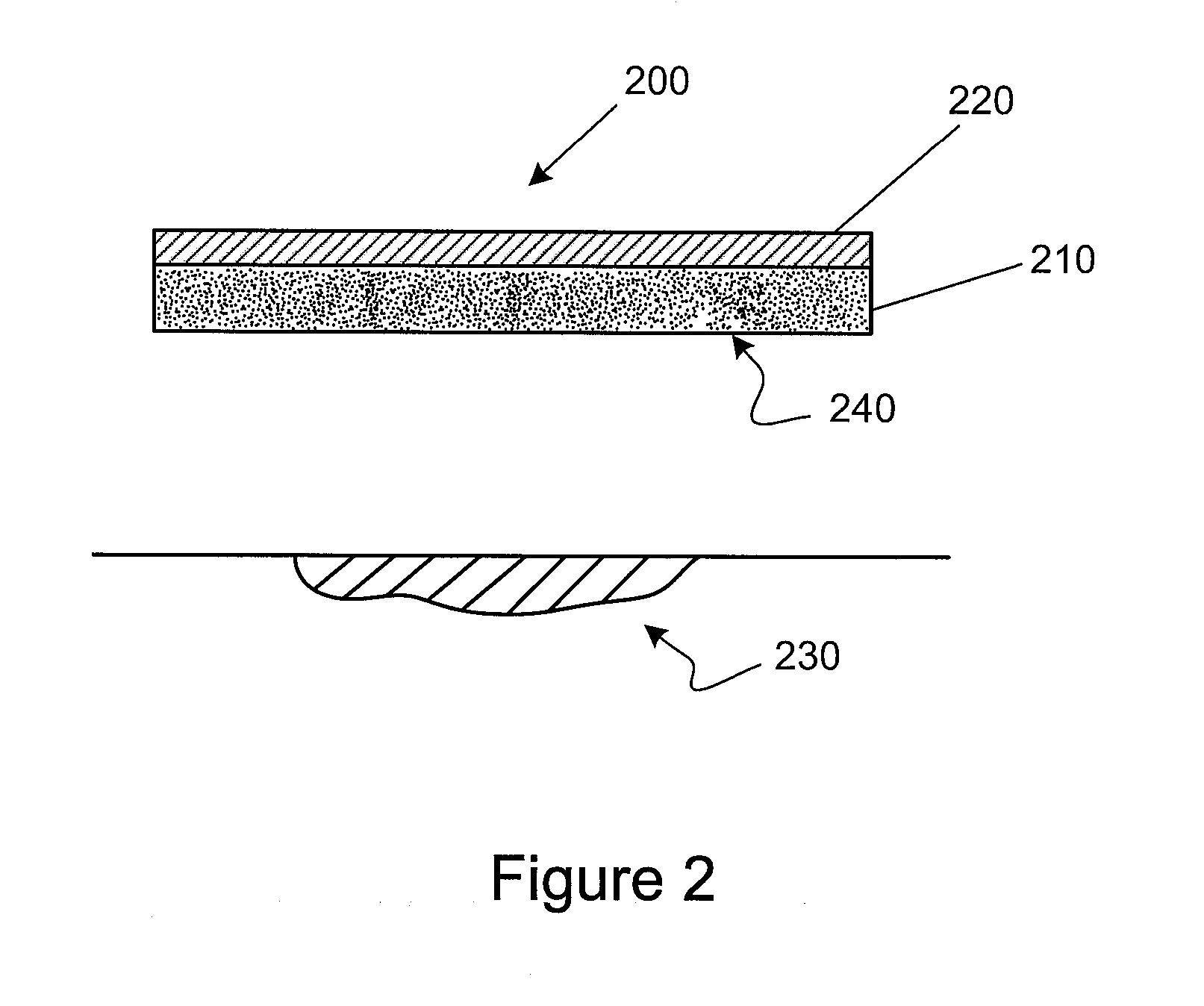Multi-Functional Wound Dressing Matrices and Related Methods
a wound dressing and multi-functional technology, applied in the field of multi-functional wound dressing matrices, can solve the problems of insufficient wound care, increased risk of wound infection, and increased risk of wound infection, and achieve the effect of significantly reducing the healing ra
- Summary
- Abstract
- Description
- Claims
- Application Information
AI Technical Summary
Benefits of technology
Problems solved by technology
Method used
Image
Examples
example 1
Preparation of Thin Polyzene®-F Matrix by Dip-Coating Method
[0131]In one embodiment, thin films of Polyzene®-F Matrix can be prepared by dip-coating method, as follows. To produce ultra-thin Polyzene®-F films on arbitrary substrates, a programmable dip-coating stage can be employed. Pre-cleaned and adhesion promoter pre-treated substrates can be immersed into solutions of Polyzene®-F in concentration ranges from 0.5 to 50 mg / ml in various solvents for a period of 0-5 min., after which they can be withdrawn from the solution at a speed of 50 μm / s up to 50 mm / min. After removal of the samples, an optional heat curing step at 40-80° C. for 10-30 min can be employed to achieve removal of residual solvents. The resulting films exhibit thickness from a range from about 0 to about 1.0 μm, and from about 0-0.5 μm.
example 2
Preparation of Thin Polyzene®-F Matrix by Spin-Coating Method
[0132]In one embodiment, thin films of Polyzene®-F Matrix can be prepared by spin-coating method, as follows. To produce homogeneous and ultrathin Polyzene®-F films on flat substrates, a spin-coating procedure can be employed. The pre-cleaned and adhesion promoter pre-treated substrates can be centered on a spin-coating device and 0.1 to 0.5 ml of Polyzene®-F solutions in concentration ranges from 0.5 to 50 mg / ml in various solvents are spread on the substrate. After a dwell time of 1-10 sec, a ramp to 10-1000 rpm can be executed to achieve homogeneous spreading of the solution, followed by a linear ramp to a target of 1000-2000 rpm for further thinning of the film in an interval time of 1-10 seconds. A final ramp to 2000-4000 rpm with a dwell time of 5-120 sec can be carried out to arrive at the desired film thickness. After removal of the samples, an optional heat curing step at 40-80° C. for 10-30 min. can be employed t...
example 3
Preparation of Thick Polyzene®-F Matrix by Spray-Coating Method
[0133]In one embodiment, thin films of Polyzene®-F Matrix can be prepared by a spray-coating method, as follows. A pneumatic dual-feed coaxial nozzle with an orifice of 0.5 mm can be supplied with Polyzene®-F solutions in various solvent blends using a programmable syringe pump. Polyzene®-F concentration ranges from 0 to 20 mg / ml, and can be supplied to the nozzle at a rate of 1-5 ml / min. Atomization can be achieved by pressure regimes of 1.0-4.5 bar depending on the viscosity of the solution. Sample distance can be varied in the experiment between 0-40 cm. The resulting films exhibit a thickness from a range from about 1.0 to about 100 μm, depending on the employed spray-coating time period.
PUM
| Property | Measurement | Unit |
|---|---|---|
| Size | aaaaa | aaaaa |
| Size | aaaaa | aaaaa |
| Molar mass | aaaaa | aaaaa |
Abstract
Description
Claims
Application Information
 Login to View More
Login to View More - R&D
- Intellectual Property
- Life Sciences
- Materials
- Tech Scout
- Unparalleled Data Quality
- Higher Quality Content
- 60% Fewer Hallucinations
Browse by: Latest US Patents, China's latest patents, Technical Efficacy Thesaurus, Application Domain, Technology Topic, Popular Technical Reports.
© 2025 PatSnap. All rights reserved.Legal|Privacy policy|Modern Slavery Act Transparency Statement|Sitemap|About US| Contact US: help@patsnap.com



